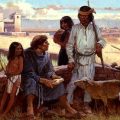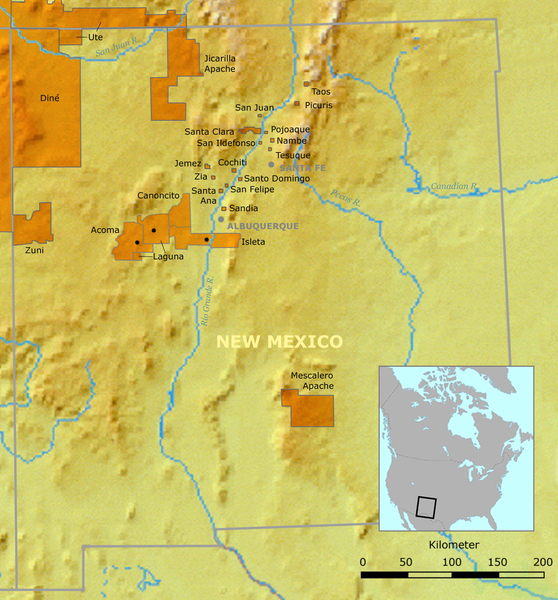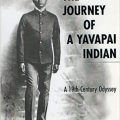When the United States acquired what is now New Mexico and Arizona in 1846, a number of Pueblos were brought under American rule according to the Discovery Doctrine. The Pueblos created a few problems for the Americans, however, as they did not conform to the stereotype of nomadic Indians whose lives centered around hunting. Actually, very few Indian nations in the United States resembled this stereotype, but the American government has never let the realities of Indian cultures interfere with imaginary descriptions.
Like many other Indian nations, the Pueblos were settled agriculturalists who had been raising corn, beans, squash, cotton and other plants for many centuries. Unlike the other Indian nations, however, the Pueblos lived in rather substantial villages with a central plaza. Their houses were multi-story structures constructed from stone. When the Spanish first encountered these villages, they called them Pueblos (Spanish for town) and unfortunately this term was, and still is, used to group a number of distinct peoples together.
The Indian people grouped together as Pueblos speak six mutually unintelligible languages and occupy more than 30 villages in a rough crescent more than 400 miles in length.
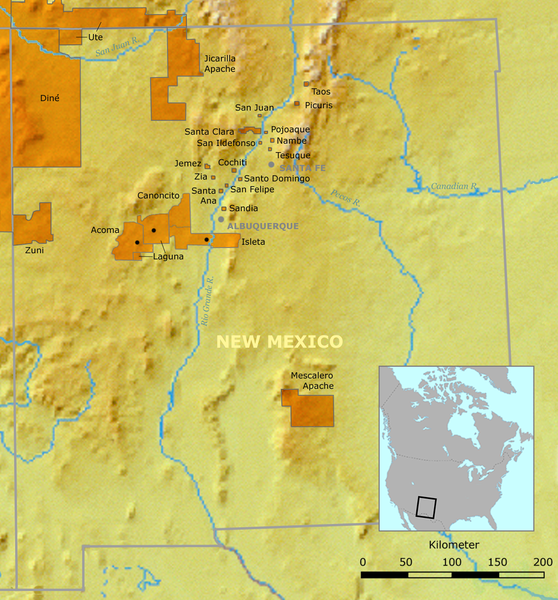
Village Names:
Most of the pueblos have been given European names: some of these are Spanish corruptions of their own names while others are purely Spanish names which are unrelated to their native names. The common names of some of the pueblos are listed below.
Acoma: from Akome which means “people of the white rock.”
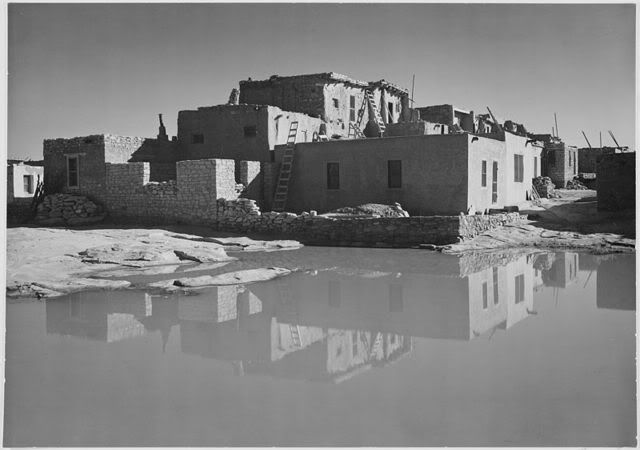
An Ansel Adams photo of Acoma is shown above.
Cochiti: the Spanish version of Katyete whose meaning is unknown.
Isleta: the native name for this Tiwa-speaking pueblo is Teui which means “town.”
Jemez: this is the Spanish spelling of hemis which means “Hemis people.” The native name for this Towo-speaking pueblo is Walatowa which means “the people in the canyon.”
Laguna: this pueblo carries the Spanish name for lake. The native name for this Keresan-speaking pueblo is Kawaik whose meaning is unknown.
Nambe: this is the native name for the Tewa-speaking pueblo and means “pueblo of the mound of earth.”
Picuris: this is the Spanish version of Pikuria. The native name for the Tiwi-speaking pueblo is Piwwetha which means “pass in the mountains.”
Pojoaque: this is a Spanish corruption of the native name Posunwage which means “drink water place.”
San Juan: the native name for this Tewa-speaking pueblo is Oke whose meaning is unknown.
Sandia: the pueblo carries the Spanish name for watermelon. The native name for this Tiwa-speaking pueblo is Nafiat which means “a dusty or sandy place.”
San Felipe: the native name for this Keresan-speaking pueblo is Katishtya whose meaning is unknown.
San Ildefonso: the native name for this Tewa-speaking pueblo is Pokwoge which means “where the water cuts down through.”
Santa Ana: the native name for this Keresan-speaking pueblo is Tamaya whose meaning is unknown.
Santa Clara: the native name for this Tewa-speaking pueblo is Ka’po whose meaning is unknown.
Santo Domingo: the native name for this Keresan-speaking pueblo is Kiuwa whose meaning is unknown.
Taos: this is the Spanish version of Tua which means “houses” or “village.”

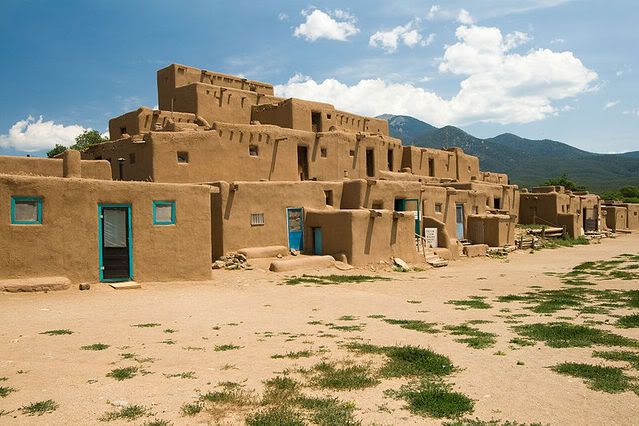
Taos Pueblo is shown above.
Tesuque: this is a Spanish corruption of the native Tewa name Tatunge which means “dry spotted place.”
Zia: this is from the native Keresan name Tseja whose meaning is unknown.
Zuni: this is the Spanish corruption of the Keresan word Sunyi. The native name for the pueblo is A’shiwi which means “the flesh.”
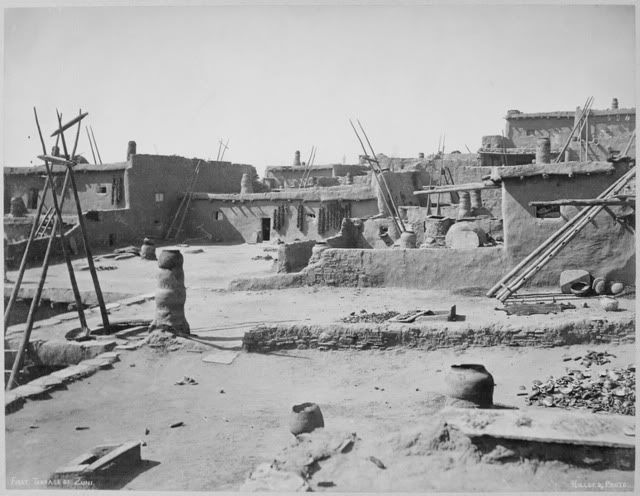
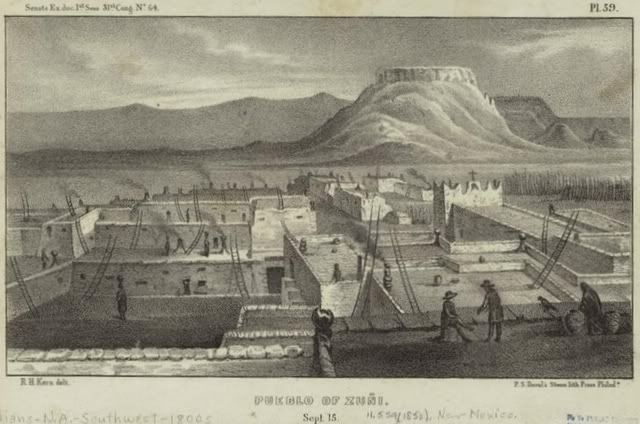
Zuni Pueblo is shown above.
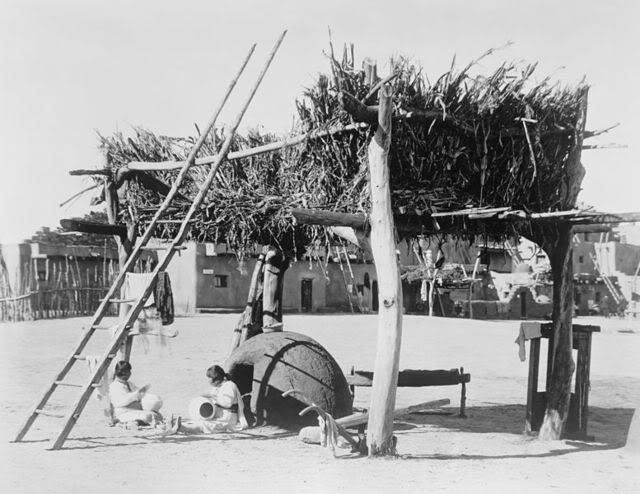
A Zuni Exhibit is shown above.
The Hopi villages are in Arizona and the name “Hopi” is a contraction of Hopi-tuh which means “peaceful ones.” While the United States has insisted on dealing with the Hopi as if they were a single tribe rather than independent pueblos, not all of the Hopi villages recognize the authority of the Hopi Tribal Council. The Hopi villages (pueblos) are listed below:
Walpi which means “place of the gap.”
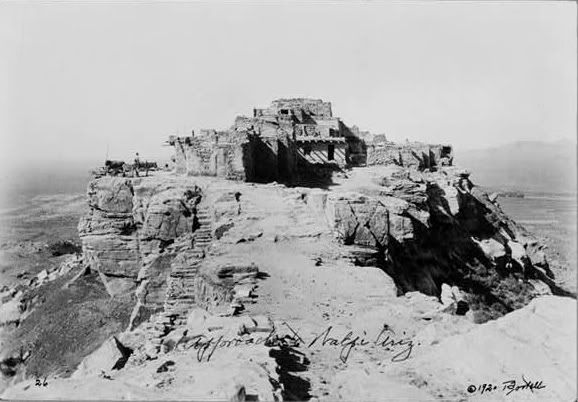
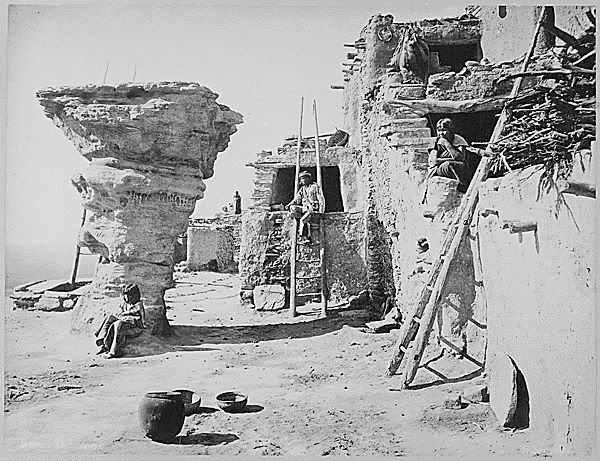
Walpi Pueblo is shown above.
Sichomovi which means “place of the mound where wild currents grow.”
Hano is actually a Tewa village whose name is derived from anopi which means eastern people.
Shungopovi which means “place by the spring where the tall reeds grow.”
Michongovi which means “place of the black man.” The name comes from Mishong, the leader of the Crow Clan who brought his people from the San Francisco peaks to Hopi in 1200 AD.
Shipaulovi which means “the mosquitos.”
Oraibi which means “place of the rock called Orai.”
Kiakochomovi which means “place of the hills of ruins.”
Hotevilla which means “skinned back.”
Bakabi (Bacobi) which means “place of the jointed reeds.”
Moenkopi which means “place of running water.”
Housing:
The pueblos tend to be multi-storied with the second story set back from the first which provides a terraced effect. Originally, the first floor was reached through a hatchway and ladder from the second floor. Small openings high in the walls were covered with selenite which allowed sunlight to filter through and provide some lighting to the residence.
In some pueblos, such as Cochití, the first story of the houses are built using stone blocks and the upper stories are made with adobe.
Among the Hopi, town sites were determined by two factors: (1) the proximity to water, and (2) the desire for security. To provide security, the Hopi villages tend to be located on the tops of mesas. With regard to water, drinking water for the Hopi villages was provided by springs. The Hopi clan histories talk about the abundance and reliability of the water supply in the springs at the mesas where they located their villages.
